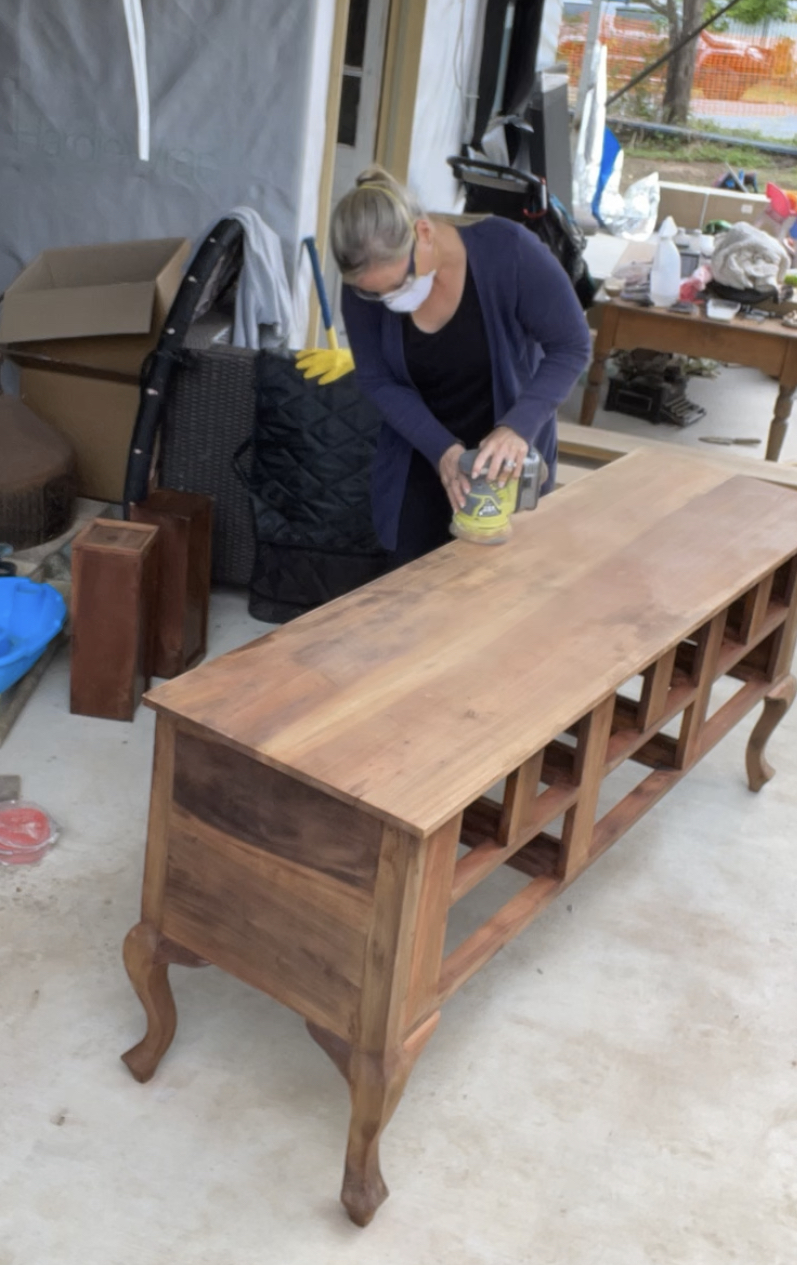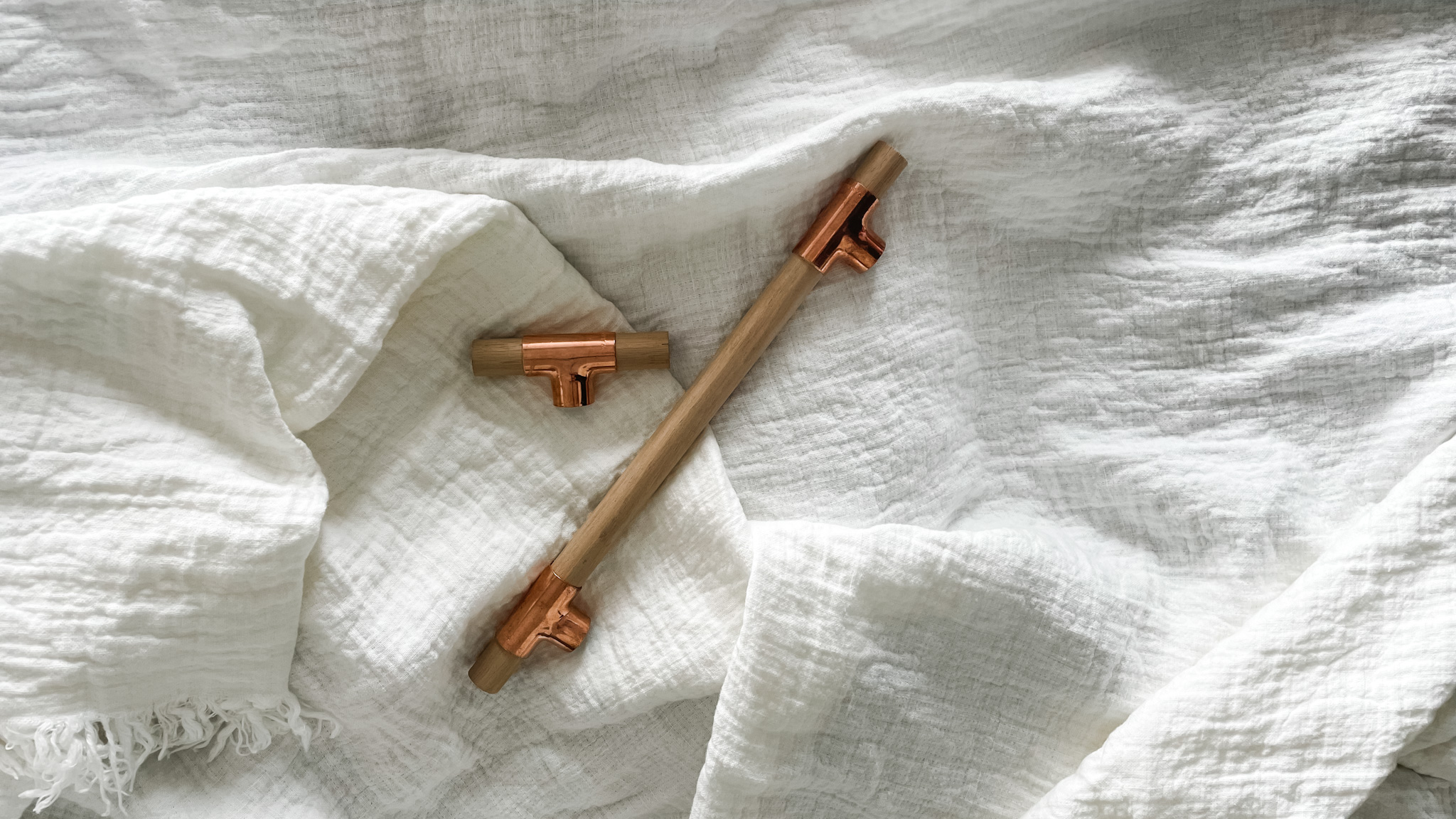
How to Upcycle a Cabinet into a Vanity
In this blog I’m going to share with you HOW I took this vanity from drab to fab in 8 steps.
For the last 2 years we have been renovating our home and we have just finished the first room, I know what you’re thinking but it’s a big renovation and with all the delays and trying to do most of it ourselves it’s taking a few minutes.
This bathroom will beshared by our 3 kids so I wanted to add a larger vanity, this was proving expensive so I decided to get creative. After searching for sometime on marketplace I finally found the piece I was looking for.
It was the size and structure I wanted but aesthetically it wasn’t hitting the mark and I had to figure out what to do with the counter as wood in a bathroom with 3 kids, 5 and under would be disastrous.
@renowayoflife Cabinet upcycle that will blow your mind 🤍🔥 DIY home hacks Here’s an overview of how we achieved the overall look of this cabinet. There are so many moving parts to this project I feel like this is 10 posts in one, but it’s what you voted for so here it is. I will also be sharing a step by step tutorial via email so if you’re not on it get on the list, link in bio 🤍🤍 Questions? . . . #diy #homehacks #diyhacks #homehack #diytips #diyhome #bunningsinspo #bunnings #homedesignideas #diyidea #diyinspiration #lifehacks #australia #bathroom #bathroomdesign #bathroomrenovation #bathroominspiration #bathroominspiration #queenslanderhome #queenslanderrenovation #queenslanderhouse ♬ Aesthetic
- Dishwashing liquid and cloth for cleaning
- Oven Cleaner
- Sander
- Bleach
- Liming White by Feast Watson
- 19mm Dowel
- Copper Plumbing Tee’s
- Gloves
- Mask
- Glasses
Step One: Remove the Varnish
I used my favourite hack and sprayed oven cleaner all over the vanity and drawers and left it for 30 – 60 minutes. I hosed it off and left the cabinet to dry completely. If the varnish is really thick and heavy you may want to repeat this step, in this case I only needed to do it once.

Step Two: Sand
Once the cabinet was completely dry I sanded. For a more even finish, taking the wood to raw I would suggest giving your wood a fine sanding. I used grit 220, a fine sanding pad using an orbital sander. You can use a sanding block but it will take a little longer
TIP: When sanding move the sander continuously at a smooth steady pace, do not leave the sander in one place or apply too mush pressure as you can gouge the wood.

Step Three: Bleach
I poured some house hold bleach into a container and using a chux cloth I wiped down the cabinet and drawers like you would a stain. Once it’s completely dry you can see the impact of the bleach, to get the look I desired, I repeated this step.
TIP: Don’t do the inside of the drawers. I did and couldn’t get a nice even finish so ended up staining the inside a darker brown.

Step Four: Sand
Lightly sand the cabinet
Step Five: Make any repairs
Our cabinet had been handmade and some of the drawers were sticking. We noticed the carpenters had filled between the structure of the desk and once we removed these the cabinet was able to sit square. We also removed one of the back legs, the one against the wall that wouldn’t be seen and nailed it to the front of the cabinet in the middle. We replaced the back leg with some pine we had left over from another job.
Step Six: Remove the counter
After some inspection, we noticed the counter was screwed on, We removed the screws and then ran a blade between the counter and cabinet to remove any glue.
Step Seven: CounterTop
We found an amazing piece of white quartertone (exactly what I was looking for) on the market place. We cut it down using a grinder, keeping it wet during the cut. Then measure out our plumbing holes and made 4 incisions on both sides of the stone, and made the final cut. As this was something we had never done before, we opted for surface-mounted sinks in case we weren’t able to get a neat line, it also meant we didn’t have to build the cabinet up.
We left the stone its original width as we were worried about it cracking, meaning that the counter went from 540 to 620. This worked out wonderfully as the plumbing had been installed from the floor, so it left a void behind the cabinet for the pipes, saving us from losing several drawers. So it wasn’t wasted space, we added some pine at the end of the cabinet by the toilet to create a hidden shelf.
We added a frame at the back of the cabinet to help with the weight.

Step Eight: Sinks
We decided to install the sinks longways, this meant they were more practical with the deeper counter and it left more useable space between sinks.
Step Nine: Stain the vanity
I love the colour of the vanity but it needed a finishing touch to even out the finish and add a waterproofing finish to the vanity.
I decided to use Liming White by Feast Watson and applied 3 layers, waiting at least 2 hours between coats.
Step Ten: Handles
I didn’t like the handles that came with the cabinet, so decided to replace them.
For the top drawers I bought some basic black mushroom handles from Bunnings and painted them using Dulux Metalshield primer and Dulux Metalshield Hammered Bronze.
I made the bottom pulls using a piece of dowel and copper plumbing tees. I painted the plumbing tees with Dulux Metalshield primer and Dulux Metalshield Hammered Bronze.
I cut the dowel for the middle bar, the ends and the middle to connect to the cabinet and secured them using hard as nails. I stained the dowel using Feast Watson Liming White applying 3 coats.

*This post may contains affiliate links, so we may earn a small commission when you make a purchase through links on our site at no additional cost to you. My opinions are my own.
Join
Work With Me





0 Comments